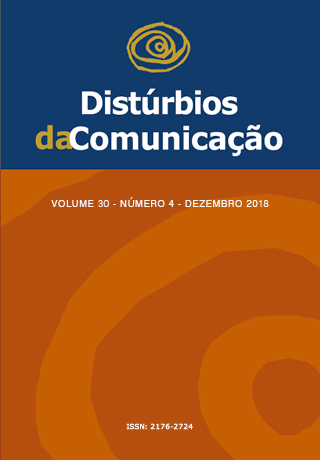Interchange of ankyloglossia for the evolution of the phonological framework: clinical case
DOI:
https://doi.org/10.23925/2176-2724.2018v30i4p785-790Keywords:
Lingual Frenulum, Speech Sound Disorder, Ankyloglossia.Abstract
Introduction: Changing lingual frenulum becomes aggravating in children with Phonological Disorder. In view of the complexity of speech production, the speech-language intervention is necessary to ensure the balance between form and function. Objective: The purpose of this study is to describe the therapeutic process of a male child at five years of age with Phonological Disorder and lingual frenulum alteration. Methods: The diagnosis of Phonological Disorder was performed at 5 years of age. The evaluation of the phonological aspect was performed through the application of the imitation tests and appointment of the Children’s Language Test ABFW- phonology and calculation of Percentage of Correct Consonants (PCC) in three different moments. The therapeutic intervention was based on the Modified Cycle Model and performed Frenectomy. Results: In the intervention process 12 speech therapy sessions were performed while the child waited for the surgical procedure, with a limited evolution of the / r / and / l / phonemes. A surgical procedure of Frenectomy and 23 speech therapy sessions were performed with the objective of organizing the phonological system. After therapeutic and surgical intervention, an improvement was observed in the degree of speech intelligibility that went from mild to moderate and adequacy of phonological processes not expected for the age. Conclusion: Speech therapy with a focus on phonological processes was important to improve speech intelligibility, but the surgical procedure is fundamental to improve articulatory distortions justified by the altered form.Downloads
Downloads
Published
Issue
Section
License
Copyright (c) 2018 Maria Gabriela Cavalheiro, Camila de Castro Corrêa, Giédre Berretin-Felix, Luciana Paula Maximino

This work is licensed under a Creative Commons Attribution 4.0 International License.









